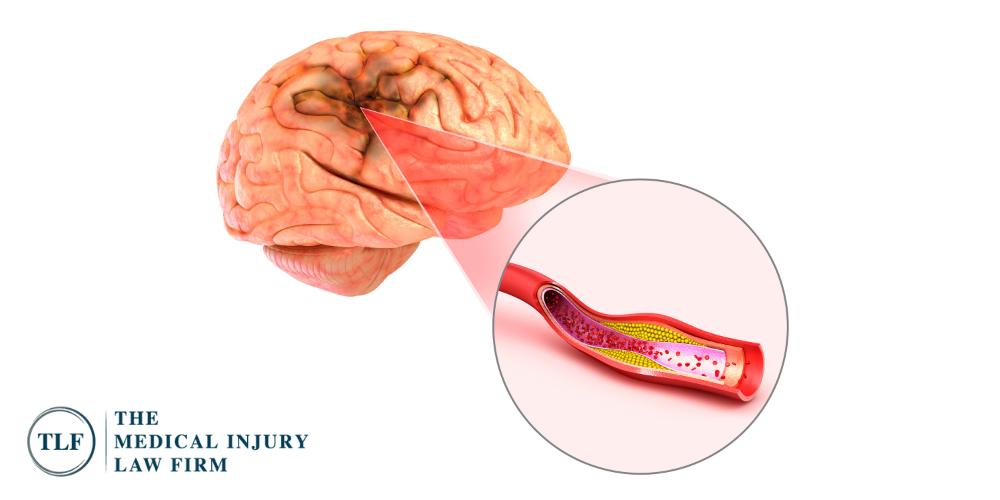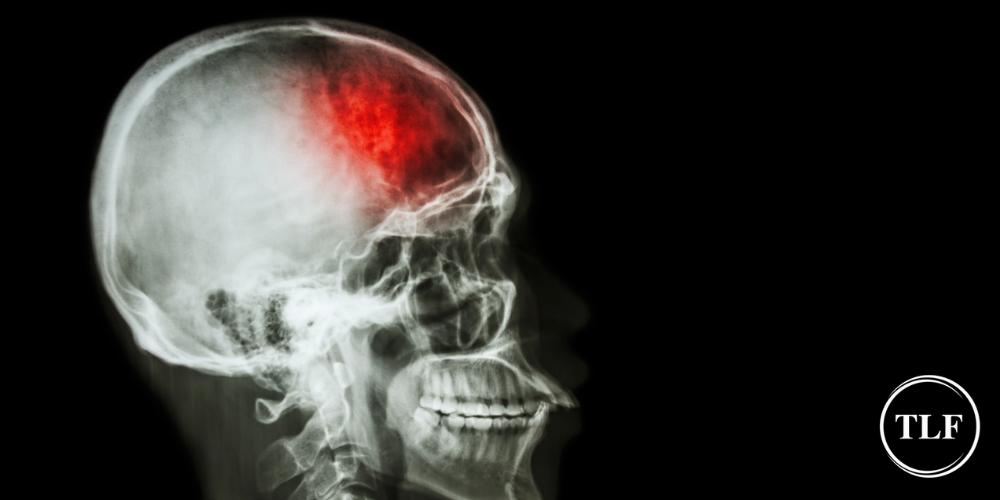When it comes to treating a stroke, every second counts. The timely and accurate diagnosis and treatment of a stroke can mean the difference between recovery and long-term disability, or even life and death. Unfortunately, in some instances, medical professionals fail to provide their patients with the minimum standard of care required in the event of a stroke, leading to devastating consequences for patients and their families.
If your loved one has suffered from a delayed or improper stroke diagnosis, you may have grounds to file a stroke medical malpractice claim. The Ohio and Kentucky medical malpractice attorneys at TLF: The Medical Injury Law Firm are here to help you understand your rights and guide you through the legal process, ensuring you receive compensation for your losses.
Call our law firm toll-free at (800) 698-4054 and schedule a free consultation with a member of our team to discuss your potential medical malpractice lawsuit.
Types of Strokes
A stroke is a sudden disruption of blood flow to the brain, either due to a blockage or uncontrollable bleeding, which, if left untreated, can damage a person’s brain cells or even lead to death. There are two main types of strokes people can suffer from, known as ischemic strokes and hemorrhagic strokes.
Ischemic Stroke
An acute ischemic stroke is a stroke caused by a blood clot or atherosclerotic plaque. This plaque is a buildup of fatty substances in the blood, which can cause the blood vessels to thicken, restricting blood flow.
Ischemic strokes are the most common type of stroke, accounting for the majority of stroke cases. The severity of these strokes depends on factors such as the size and location of the affected blood vessels in the brain.
Hemorrhagic Stroke
A hemorrhagic stroke occurs when a blood vessel in the brain ruptures, leading to bleeding within or around the brain tissue. This rupture can be caused by conditions such as an aneurysm, arteriovenous malformation, or hypertension, which can weaken the walls of various blood vessels.

Intracerebral Hemorrhage
An intracerebral hemorrhage is a specific type of hemorrhagic stroke that occurs when there is bleeding inside the brain tissue itself. This occurs when a blood vessel within the brain ruptures, leading to the release of blood into the surrounding brain tissue. The accumulated blood creates pressure, causing damage to brain cells and potentially leading to neurological deficits.
Subarachnoid Hemorrhage
A subarachnoid hemorrhage (SAH) is a type of hemorrhagic stroke that occurs in the subarachnoid space, which is the space between the brain and the thin, outer membrane that covers it. This type of stroke frequently occurs when an intracranial aneurysm ruptures, causing blood to be released into the subarachnoid space. Like with an intracerebral hemorrhage, this buildup of blood can also generate pressure, which can severely damage the brain.
Transient Ischemic Attack (TIA)
A transient ischemic attack (TIA), often referred to as a “mini-stroke,” is a temporary disruption of blood flow to the brain, resulting in stroke-like symptoms. TIAs typically last for a short duration, usually somewhere between a few minutes and a couple of hours.
These mini-strokes are caused by a temporary blood clot or blockage, and while the symptoms typically resolve on their own, they often serve as a warning sign for a potential impending stroke. Unlike a full stroke, TIAs do not cause permanent brain damage, but they still require prompt medical evaluation to prevent future, more serious strokes.
Common Causes and Risk Factors for Strokes
Strokes have various common causes and risk factors that contribute to their occurrence. Hypertension (high blood pressure) is a major risk factor for both types of strokes, weakening blood vessel walls and increasing the likelihood of clots or vessel ruptures. Other risk factors include atrial fibrillation, a heart rhythm disorder that can lead to blood clots, and atherosclerosis, which causes a buildup of fatty deposits in the arteries.
Lifestyle factors such as smoking, excessive alcohol consumption, a sedentary lifestyle, and an unhealthy diet high can also increase someone’s stroke risk. Additionally, age, gender (men are generally at higher risk), genetics, and certain medical conditions, such as diabetes, could increase a person’s susceptibility to strokes.

Signs and Symptoms: Recognizing a Stroke
It’s important that everyone knows the signs and symptoms of an acute stroke. Primary stroke symptoms include:
- Face drooping on one side
- One-sided leg and/or arm weakness
- Sudden dizziness
- Severe headache
- Slurred, incoherent speech
Those with a drooping face may have difficulty closing or blinking one of their eyes and may not be able to move one-half of their mouth. Those with arm or leg weakness may not be able to walk properly or may not be able to hold both of their arms up for 10 seconds. Those who are slurring their speech may have difficulty speaking normally or understanding what is being said to them.
How To Act F.A.S.T.
The easiest way to remember the signs of a stroke is by acting F.A.S.T.:
- Face drooping
- Arm weakness
- Speech difficulties
- Time to call 911
If you notice someone presenting ANY of these signs, you need to call 911 and request an ambulance for them as soon as possible. Be sure to mention that you believe that they are having a stroke. Prompt medical treatment can help prevent impending strokes or limit damage from the stroke.

Treatment Options for Stroke
There are a number of treatment options for strokes, with treatments varying depending on the type of stroke, the severity of the stroke, the location of the stroke, and the amount of time from the onset of symptoms.
Thrombolytic Therapy
Thrombolytic therapy is a medical intervention used to treat ischemic strokes. It involves administering an intravenous tissue plasminogen activator (tPA), a clot-busting drug, to dissolve blood clots that may be blocking blood flow to the brain. This therapy aims to restore blood circulation quickly, reducing the severity of a stroke and potentially preventing long-term damage.
However, thrombolytic therapy can only be administered within a narrow window of time, and a lack of treatment could be fatal. When patients suffer brain damage or die as a result of delayed delayed tPA treatment, the patient’s family members may be able to file a medical malpractice case against the emergency medical personnel who failed to treat their loved one.
Mechanical Thrombectomy
Mechanical thrombectomy is a specialized procedure used in stroke treatment to remove blood clots from large blood vessels in the brain. This technique typically involves the use of a stent retriever, a flexible, catheter-based device, which can be threaded through the blood vessels to physically grab and remove the clot.
Mechanical thrombectomy is particularly effective for certain ischemic strokes caused by large vessel blockages, and it is often performed in conjunction with other stroke treatments. Like thrombolytic therapy, the success of a mechanical thrombectomy is highly time-dependent, and a failure to provide prompt treatment could result in a medical malpractice suit.
Clipping
In the context of treating stroke, aneurysm clipping is an invasive procedure used to stop cerebral aneurysms and prevent intracerebral hemorrhagic strokes. An aneurysm is a bulge or ballooning in the wall of an artery. If the aneurysm occurs in the brain, it can rupture and cause a hemorrhagic stroke.
During the procedure, a metal clip is placed around the swollen artery, preventing more blood from reaching the aneurysm and decreasing the risk of rupture. Aneurysm clipping is a well-established method for securing and treating certain types of cerebral aneurysms, offering a long-term solution to reduce the likelihood of future bleeding events.
Coiling (Endovascular Embolization)
Coiling, or endovascular embolization, is a minimally invasive procedure that is also used to treat cerebral aneurysms and prevent hemorrhagic strokes. During this intervention, healthcare professionals guide a catheter through the patient’s blood vessels to the aneurysm site and place small platinum coils within the aneurysm sac.
These coils induce blood clot formation, sealing off the aneurysm and preventing it from rupturing. Coiling is an effective alternative to surgical clipping and is associated with fewer surgical risks and a shorter recovery time for some patients.
Craniotomy for Hematoma Removal
If a patient suffers from a hematoma, which is a collection of blood in the brain, they could easily suffer from a stroke in the future. A craniotomy for hematoma removal is a surgical procedure performed to remove the hematoma and prevent further injury.
During the procedure, a section of the skull is temporarily removed to access the hematoma. The emergency physician will then remove the accumulated blood, relieving pressure on the brain. Craniotomy for hematoma removal is crucial for managing life-threatening situations caused by bleeding within the brain and aims to minimize neurological damage associated with a stroke.

Medications
In addition to the above interventions, certain medications can be prescribed to patients with a risk of stroke. Below are the two most common types of stroke-preventing medications that healthcare professionals provide their patients with.
Antiplatelet Drugs
Antiplatelet drugs are medications that prevent blood platelets from accumulating and forming blood clots. Unlike clot-busting medications like tPA, antiplatelet drugs are not designed to stop a stroke after it has occurred, but rather prevent a stroke from happening in the first place. Drugs like aspirin or clopidogrel are often prescribed to prevent the recurrence of ischemic strokes.
By hindering platelet activity, antiplatelet drugs reduce the likelihood of blood clot formation in the arteries, helping to maintain or restore proper blood supply to the brain. These medications are commonly used for both acute and long-term management of ischemic stroke and are an essential component of stroke prevention strategies.
Anticoagulants
Similar to antiplatelet drugs, anticoagulants are medications that prevent or delay the blood clotting process. Anticoagulants such as warfarin or direct oral anticoagulants (DOACs) are designed to interfere with the body’s coagulation factors.
These drugs are particularly useful for individuals with conditions like atrial fibrillation, where there’s an increased risk of clot formation in the heart that could lead to a stroke. Anticoagulants help to reduce the risk of ischemic strokes by preventing the formation of clots in the bloodstream, but they require careful monitoring due to the potential for bleeding complications.

Post-Stroke Care and Rehabilitation
Even after receiving treatment from emergency medicine personnel, many stroke patients still require a great deal of post-stroke care and rehabilitation to return to a relatively normal state. Common post-stroke care options include:
- Physical therapy to improve strength, balance, and coordination;
- Occupational therapy to regain skills needed for daily living;
- Speech therapy to improve speaking, understanding, reading, writing, and swallowing; and
- Psychological support to address emotional adjustments, depression, and anxiety.
Without these post-stroke interventions, patients may suffer from serious, long-term changes to their abilities like walking, working, and speaking.
Importance of a Correct and Timely Stroke Diagnosis
Timely stroke diagnosis is incredibly important to ensure that patients receive timely and effective stroke interventions. Stroke is a medical emergency where every minute counts, and delays in diagnosis can cause patients to suffer from serious and irreversible neurological damage.
If a patient is suffering from an ischemic stroke, they only have a limited amount of time in which they can receive a clot-busting drug like a tissue plasminogen activator. This kind of treatment can save the patient’s life and decrease the severity of any damage done.
A failure to treat a patient with this kind of life-saving medication could result in serious complications or even wrongful death. The same goes for many treatments for hemorrhagic strokes. Victims of this kind of medical negligence often file medical malpractice lawsuits against the healthcare professionals responsible for the delay in treatment.
However, a correct diagnosis is just as important as a timely one. For example, if a patient is suffering from a hemorrhagic stroke, and they are given tPA, the patient could suffer from more severe bleeding as a result of the drug’s clot-busting capabilities. Any complications related to an incorrect stroke diagnosis could also lead to a medical malpractice suit.

Navigating Medical Malpractice Claims in Stroke Cases
When medical professionals fail to timely diagnose or treat a stroke promptly and accurately, the consequences can be devastating. Not only can strokes cause lifelong neurological damage, but they can also be deadly, leaving the family members of the victim to handle the aftermath of the incident while grieving the loss of their loved one. Luckily, these victims don’t have to fight alone.
Since medical malpractice firms have specialized knowledge in both the medical and legal fields, they can effectively identify and prove instances where medical professionals fail to adhere to standard care practices. Using this knowledge, they can assist victims in securing compensation for medical expenses, rehabilitation costs, lost wages, and non-economic damages like pain and suffering.
A medical malpractice law firm will conduct a systematic review of the patient’s case, evaluating past medical records and consulting with medical experts to uncover any deviations from standard care. From there, they can guide the patient or the patient’s family through every step of the legal process, ensuring they understand their rights and options.
Medical malpractice suits can be complicated and stressful, but a skilled lawyer will strive to make the journey as stress-free as possible, allowing their clients to focus on recovery. Using this compassionate and professional approach, medical malpractice attorneys can provide victims with the legal representation and support they need through this tough time.

Call the Ohio and Northern Kentucky Stroke Malpractice Lawyers at TLF For a Free Consultation
As you face the challenges brought on by a stroke that was mishandled or misdiagnosed, remember you are not alone. The Ohio and Northern Kentucky Stroke Malpractice Lawyers at TLF: The Medical Injury Law Firm are here to stand with you.
With our compassionate approach to these cases and our long history of successful lawsuits, you can trust us to protect your rights and ensure that your voice is heard. Don’t let medical negligence add to your burden–let us review your case, provide you with informed legal guidance, and map out a path towards the compensation and justice you deserve.
We can handle medical malpractice litigation in both Ohio and Northern Kentucky, so contact our office closest to you. You can call our Kentucky office at (859) 898-2472 or our Ohio office at (513) 643-1689. You can also call us toll-free at (800) 698-4054 or contact us online to schedule a free consultation with a member of our experienced legal team today.

